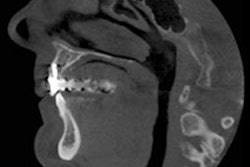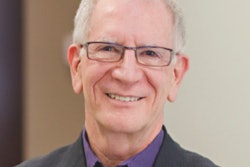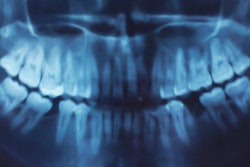
Dentists take images only when necessary, right? Perhaps not. A new study examined the relationship between the number of x-rays taken and whether dentists received a salary or on a fee-for-service basis, as well as whether patients paid for services or not.
Researchers from the University of York in the U.K. analyzed data from dentists and patients in Scotland to determine if these variables affected the number of x-rays taken. They found that there was a connection and published their findings in the Journal of Health Economics (December 30, 2017).
"Our study clearly shows that a potentially harmful treatment is being given in varying quantities according to how dentists are paid for it, and we believe this is a genuine cause for concern," co-lead author Martin Chalkley, PhD, stated in a university press release. Chalkley is a professor at the Centre for Health Economics at the University of York.
“Our study clearly shows that a potentially harmful treatment is being given in varying quantities according to how dentists are paid for it.”
Dental x-rays are a known human carcinogen and a common source of radiation exposure, with no level considered completely safe, the authors noted. Therefore, dental radiographs should be limited to times when clinical benefits outweigh the risks and their use detached from dentists' compensation or how patients pay for services, they wrote. Nonetheless, some studies have found relationships between dental imaging and meningiomas, salivary gland tumors, and thyroid tumors.
To find out if a relationship exists between financial arrangements and the use of dental x-rays, researchers used data that included 1.3 million claims made by National Health Service dentists in Scotland from 1998 through 2007.
The study looked at dentists who received a fixed salary, regardless of the treatment they provide, and those who worked on a fee-for-service model. The researchers also examined the relationship between the number of x-rays taken and whether patients were responsible for paying for any of the resulting charges or not (nonexempt or exempt).
They conducted extensive modeling and looked at data for dentists who switched between the two payment models, as well as for patients who switched dentists and between payment models.
The found that if the dentist of a patient who was exempt from payments switched from a salaried to a fee-for-service model, the probability that their patient would receive an x-ray grew 6.8 percentage points. Patient who owed fees saw an increase of 6 percentage points if their dentist switched to fee-for-service.
For patients who switched from nonexempt to exempt, the probability of undergoing an x-ray increased 2.6 percentage points if they saw a salaried dentist compared with an increase of 3.4 percentage points if they saw a fee-for-service dentist.
"We find strong evidence of statistically significant and substantial impacts of financial incentives on the incidence of x-rays," the authors wrote.
The authors noted as a limitation that this was an observational study and, therefore, they were unable to account for individual preferences.
Their results have implications for individual patient treatment and the realignment of financial incentives, they wrote.
"For a patient, the risk-benefit ratio of dental x-raying should be independent of provider's financial incentives," the authors concluded.



















